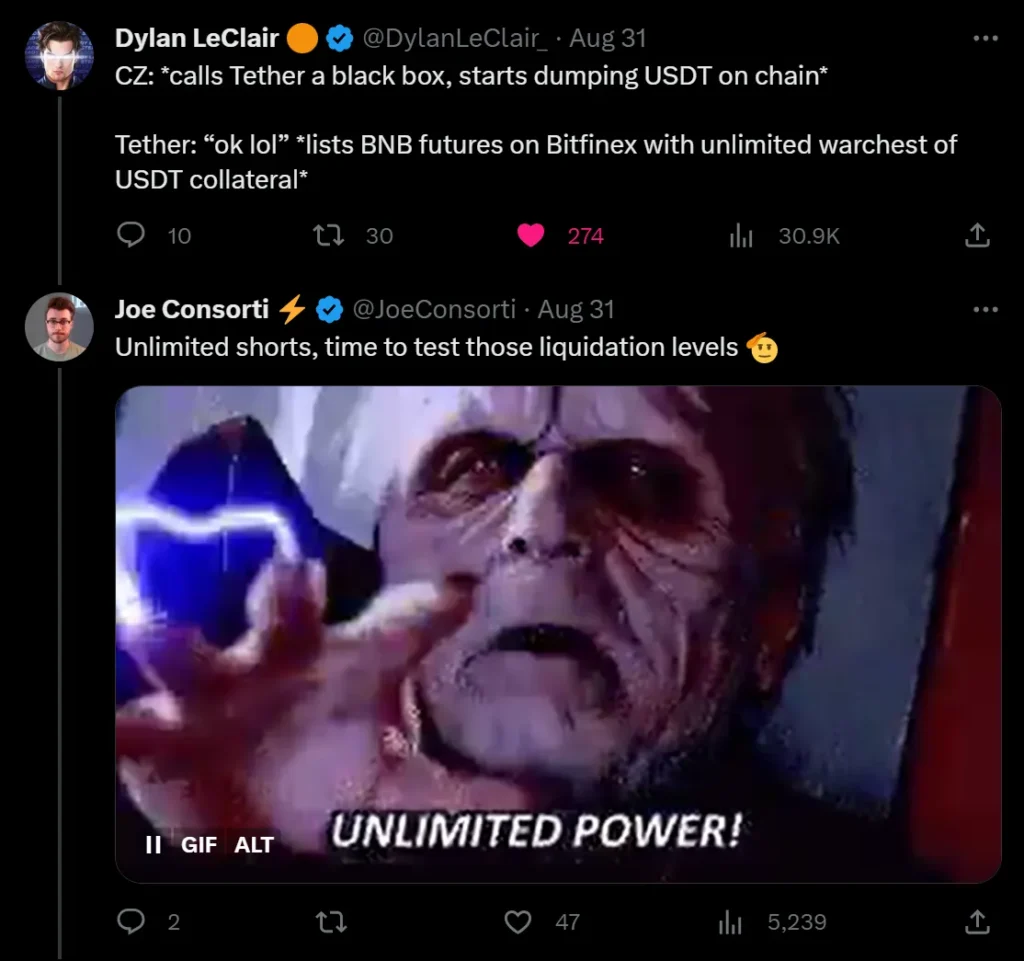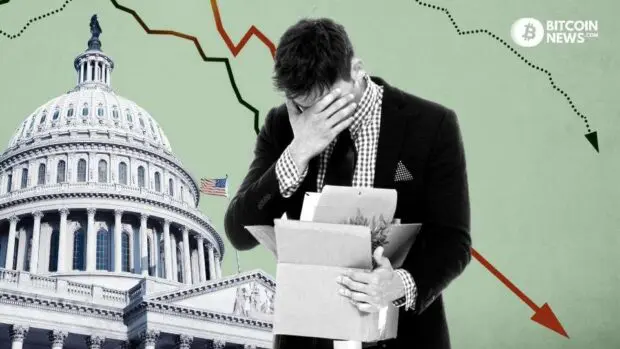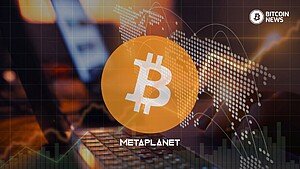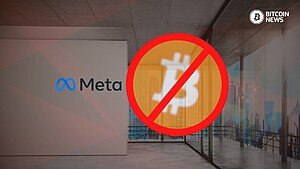This article was originally published by Joe Consorti & Nik Bhatia on TheBitcoinLayer.Substack.com
Well, that just happened.
The week we’ve long been forecasting is finally past, where the labor market data that has been sour for quite some time finally shows up after a several-month lag in the headline unemployment rate kicking higher.
On Tuesday, U.S. job openings fell to 8.827 million, the lowest level since September 2021. Worse yet, last month’s data was severely overestimated. It was revised down by 417,000 jobs, the largest downward revision in job openings… ever. Data missing expectations more often than not coincides with the start of recessions. But when it’s this bad? All bets are off. Here we go:
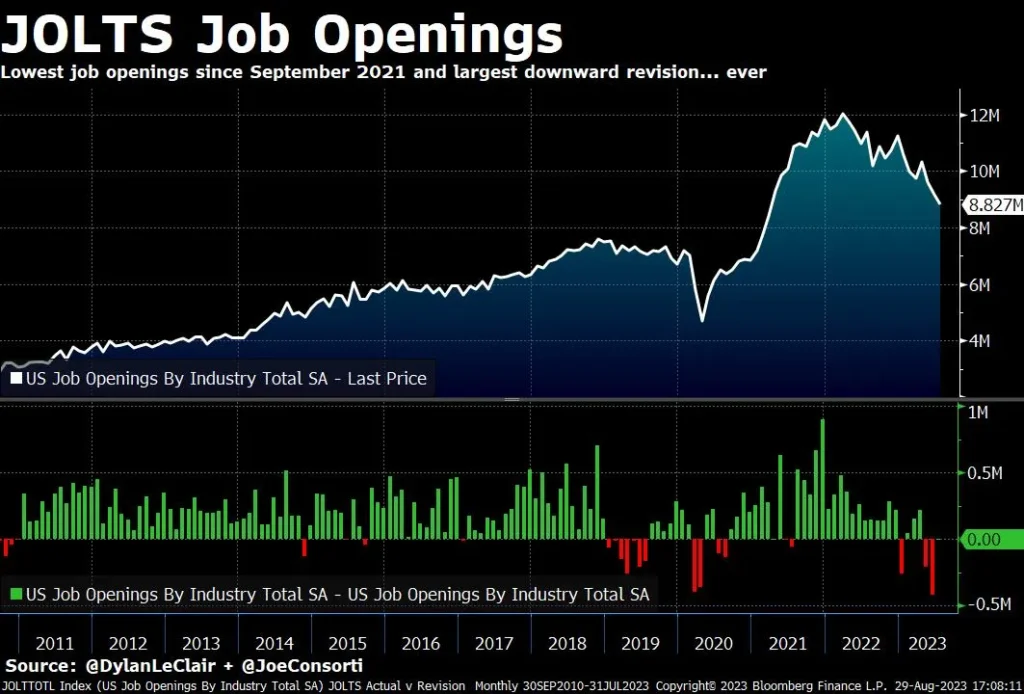
Then on Wednesday, new data showed U.S. job growth slowed materially in August. ADP employment gains fell from 371,000 in July to 177,000, missing expectations by 17,000 — adding to Tuesday’s sour job openings data. Cracks are spreading in the labor market and the impact of rate hikes is finally hitting after 19 months:
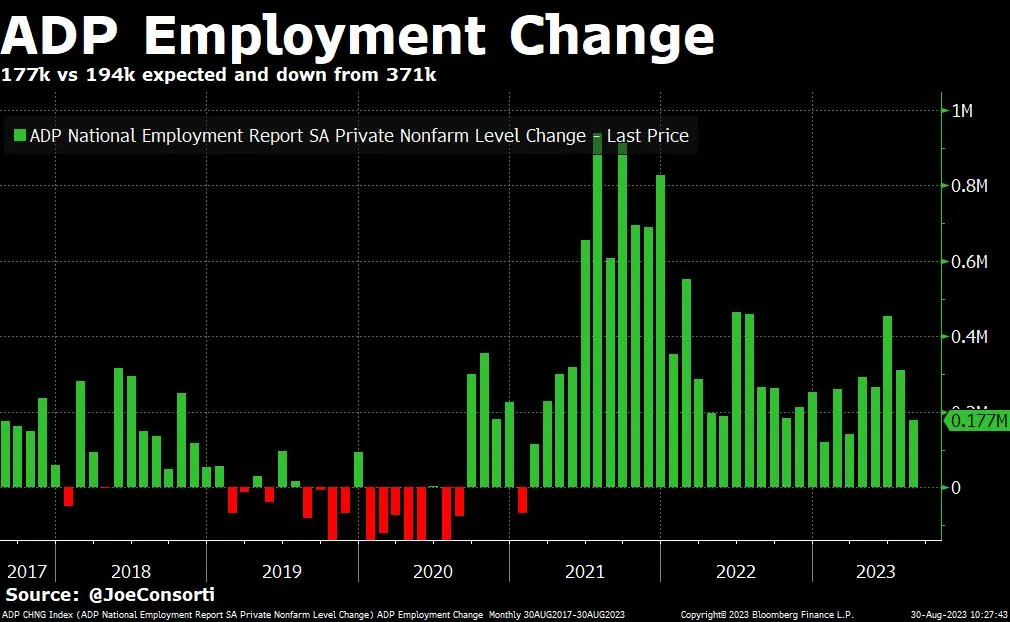
Though the labor market as illustrated by the data above has been decelerating for several months now, the headline unemployment rate lags quite far behind, usually by about a year and a half. However, on Friday, it finally showed signs of life when it rose to 3.8% versus the expectation of staying flat at 3.5%, its highest in 38 months. Given that the labor market has already been in a secular decline and lending standards sitting at multi-year highs forecast where the unemployment rate is going, one thing is certain — this is only just the beginning:
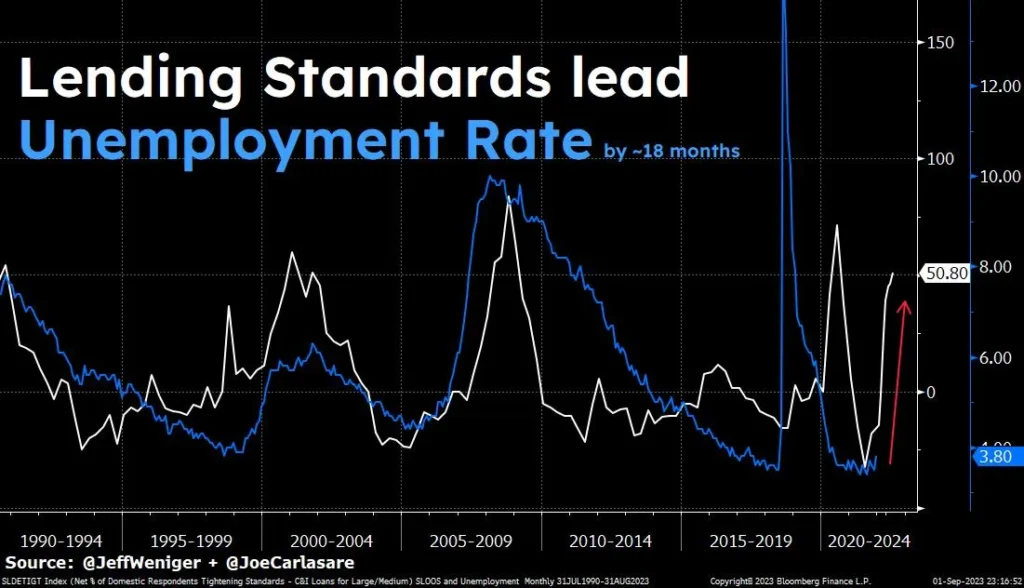
The U6 unemployment measure that counts discouraged workers and those working part-time for economic reasons jumped to 7.1%, the highest since May 2022. More fuel to the fire that consumers are doing all that they can to make ends meet and stave off winding up destitute.
Related reading : Without Bitcoin You Could End Up Working Longer and For Less Money
Consumers are at the end of their rope. July’s personal income data rose just 0.2% while personal spending rose 0.8% — a disconcerting trend of accelerating consumer spending fueled by savings and credit instead of wage increases:
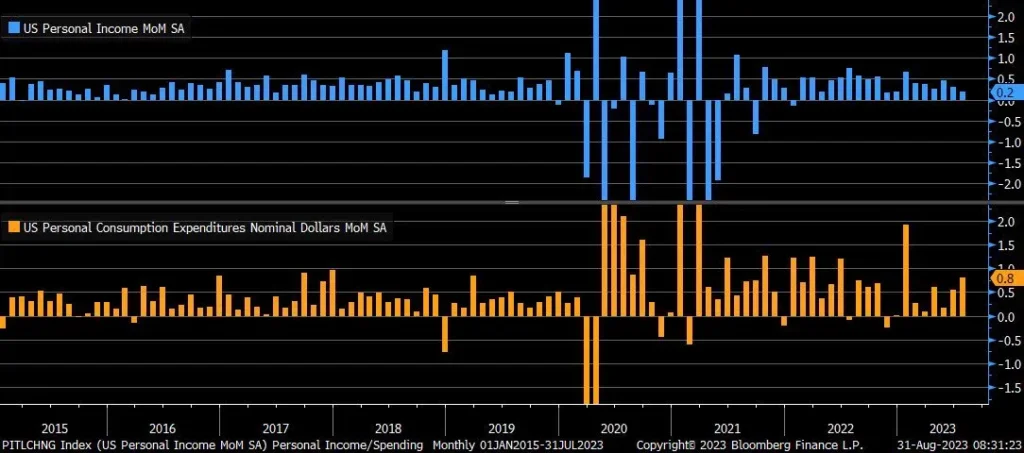
To put a spin on the classic “oh shit” scene from The Big Short:

Downward revisions have become the norm across all leading and relevant economic data, as is typical around the start of recessions. As of Friday’s data, August marks seven straight months of downward nonfarm payroll revisions, and new home sales for 13 of the past 16 months have been revised down. This downturn has been faster and harder than economists have expected, or they’re willfully ignoring economic weakness for other interests they may be serving. We’ll let you be the judge on that one:
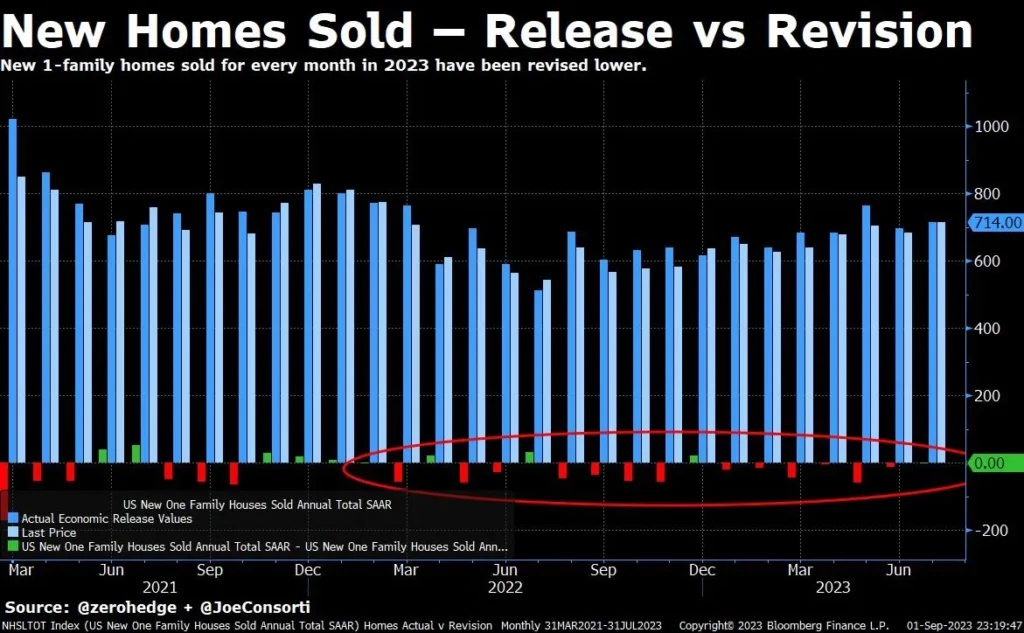
The Fed is done hiking.
At the very least, we’re closer than ever to that sentence being a reality this cycle. Why? They are always done hiking once the unemployment rate starts or is about to start rising. Given that it’s kicked up to 3.8% from 3.5% on Friday, the pause is here. The Fed’s mission to “loosen” the labor market (Fedspeak for making people lose their jobs) is taking shape. The operative question is the length of the runway before it starts cutting rates:
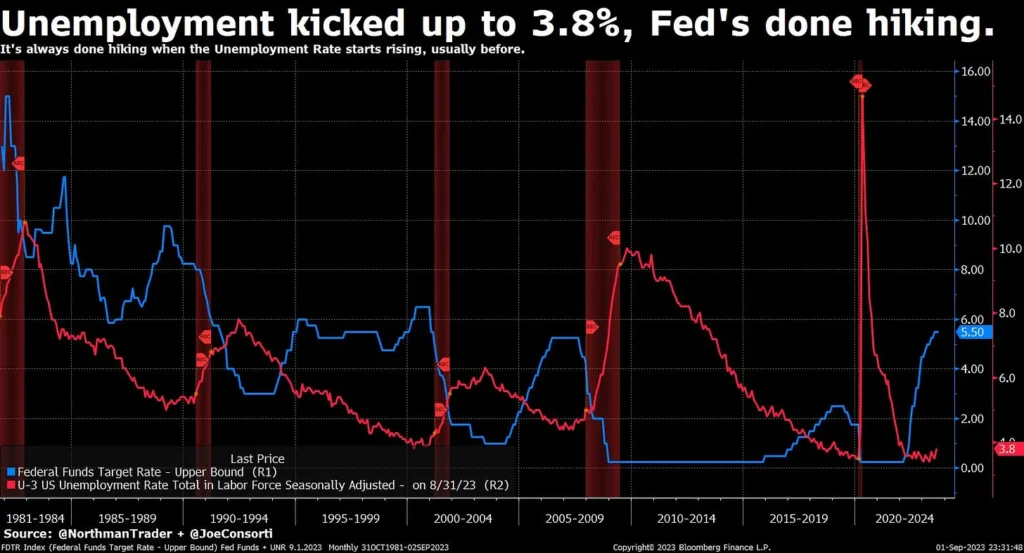
There is now just a 32.6% chance that the Fed hikes once more in November, down from 38% last week, with cuts right after in early 2024:
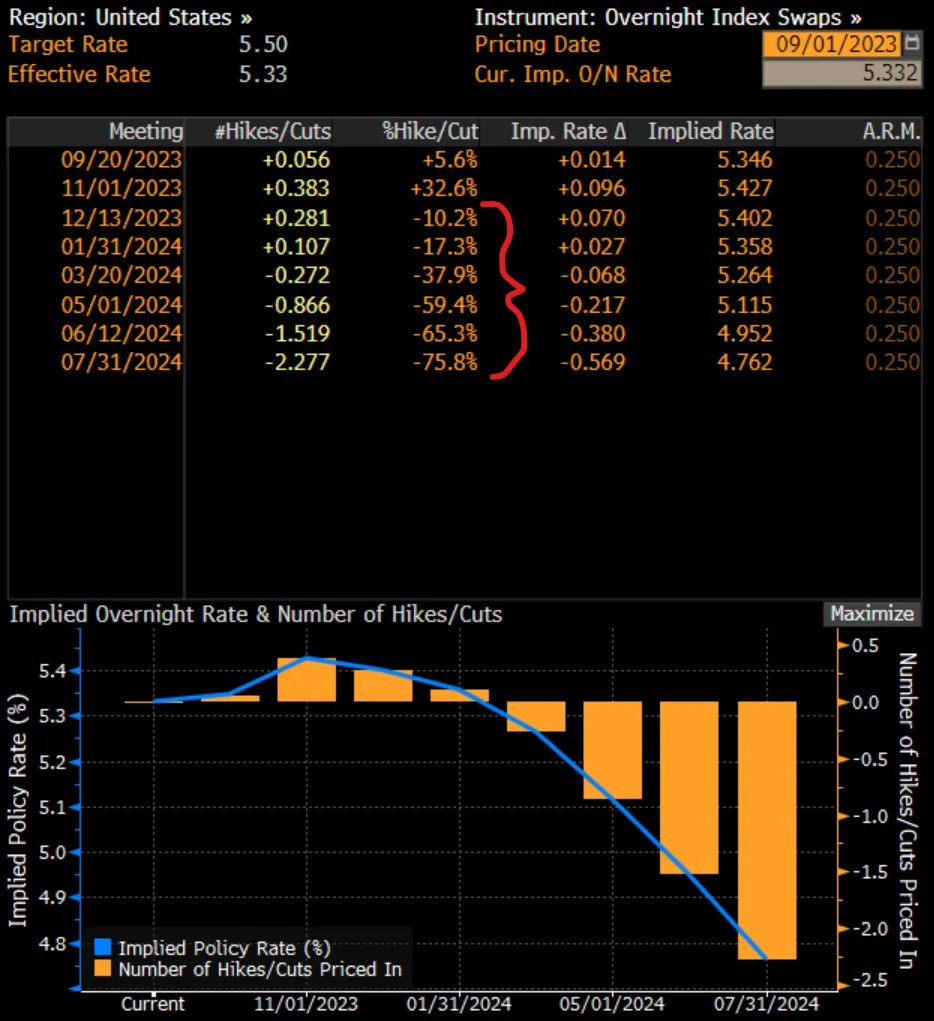
So off of weak job openings, GDP being revised down on Wednesday, slowing job growth, and the unemployment rate rising to a 3-year high, most of the relevant economic data sucks. So why are stocks ripping?
Bad news is good news right now.
Sour data relaxes investor fears of a hawkish Fed — igniting hopes of relaxed monetary policy to support asset prices. We don’t make the rules. This relationship ebbs and flows, but now stocks are looking ahead to dovishness:
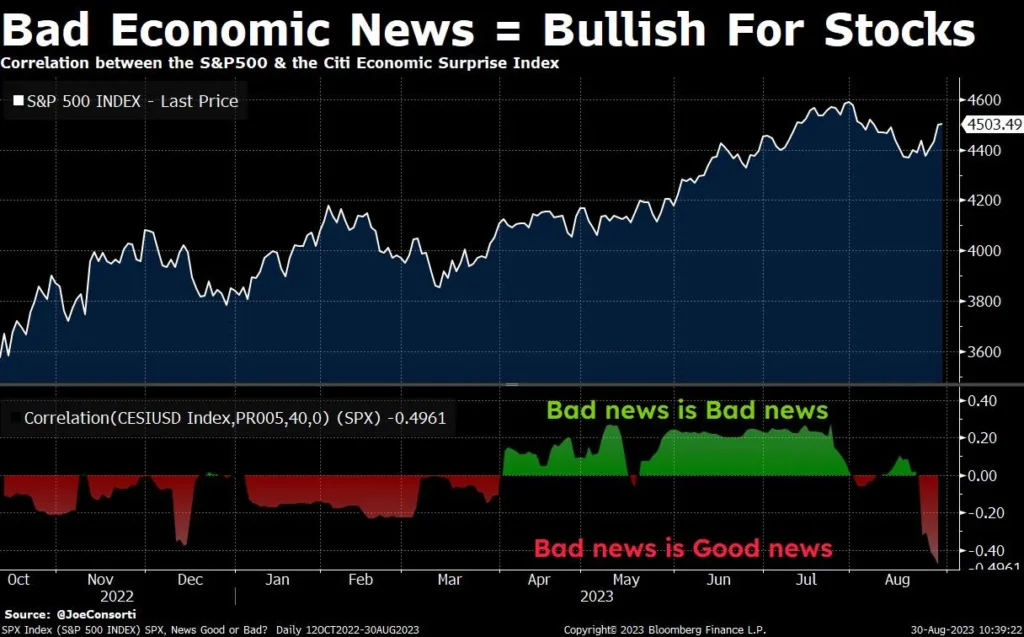
Emergency loans at the Fed’s BTFP have hit a new high of $107.52 billion, usage basically hasn’t risen for 12 weeks. Why? Regional banks are dumping consumer loans to shore up losses instead of using BTFP, packaging loans into ABS and selling them — which now yield their highest since 2008 of above 5.75% on average. This is a measure banks are taking to survive instead of the Fed:
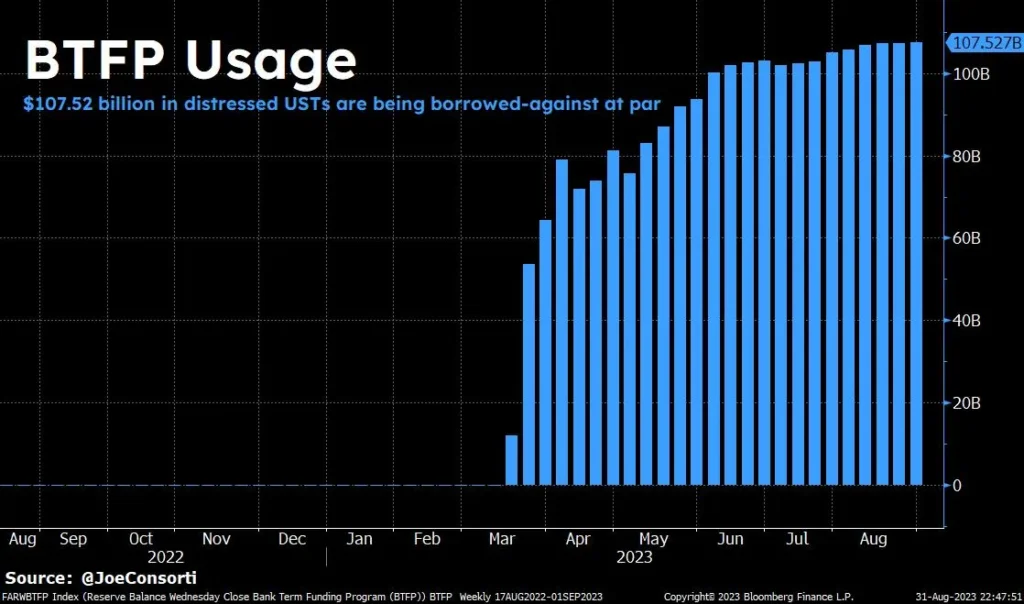
It is not rosy for regional banks.
As we’ve long said, BTFP is merely a band-aid to the real problems lurking beneath the surface—unless the Fed intends to recoup all of banks’ losses for them and perpetuate moral hazard, the music will have to be faced soon.
And well, it seems like the powers that be are realizing this too and getting out of dodge while the getting is still good. San Francisco Fed Bank Supervision Chief Azher Abbasi is retiring on October 1st. He was responsible for oversight of lenders including… SVB and First Republic Bank, the two landmark regional bank failures up to this point in 2023.
The Fed didn’t give a reason for his sudden departure. If there is anybody who knows just how bad things really are behind the scenes, it’s that guy. Leaving without warning during a lull period as the Fed’s tightest rate-hiking regime in decades has impaired regionals to the point that they are dumping all of their assets like water from a sinking ship to survive? This does not inspire confidence about the risks facing regional banks.
Amid the quiet pandemonium, the Fed is ramping up its oversight of small U.S. banks. Citizens, Fifth Third, and M&T have been warned privately by the Fed to shore up capital and liquidity planning — seems strange to warn lesser-capitalized banks to raise provisions if the economy is purportedly headed for a “soft landing,” isn’t it? Regionals are still in trouble, and the Fed knows it:

Now for a quick update on the bitcoin front. Grayscale won its lawsuit against the SEC’s rejection of its application to convert GBTC into a spot bitcoin ETF. On the news, GBTC rallied from a -32% discount to a -20% discount to NAV in less than a minute, though it has given up some of those gains and slid along with bitcoin itself in the days following the win:
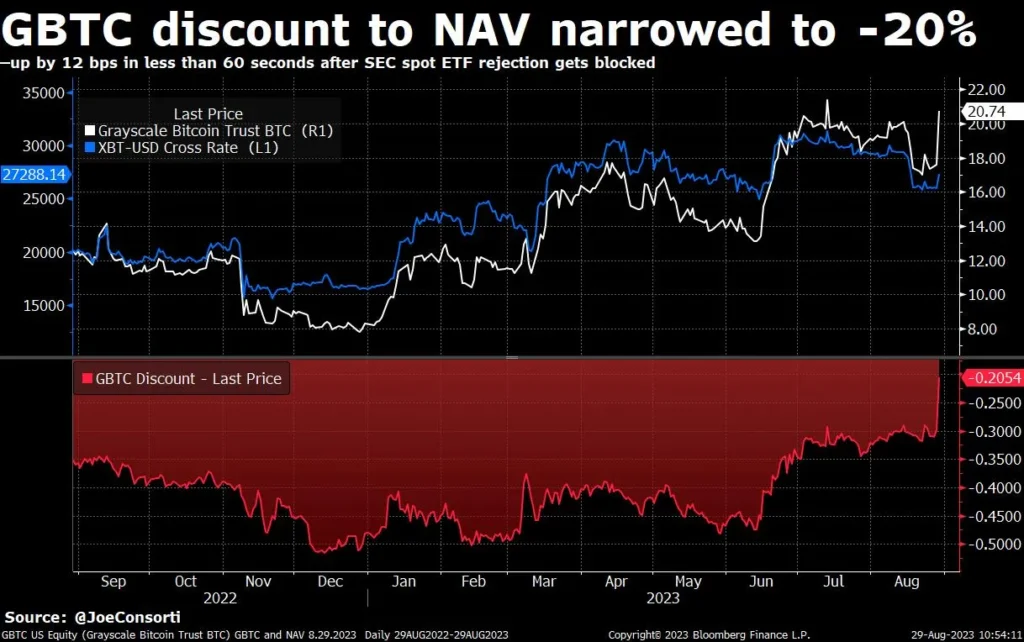
Fun in Binance and Tetherland as CZ called Tether a black box, and Bitfinex proceeded to launch perpetual BNB futures with a 20x leverage limit.
Let’s just say: if Binance has to shore up liquidity to meet margin calls on a totally non-existent BNB-collateralized loan now that there’s a conceivably unlimited amount of short pressure on BNB, bitcoin will experience gale force levels of selling pressure. Fun!
